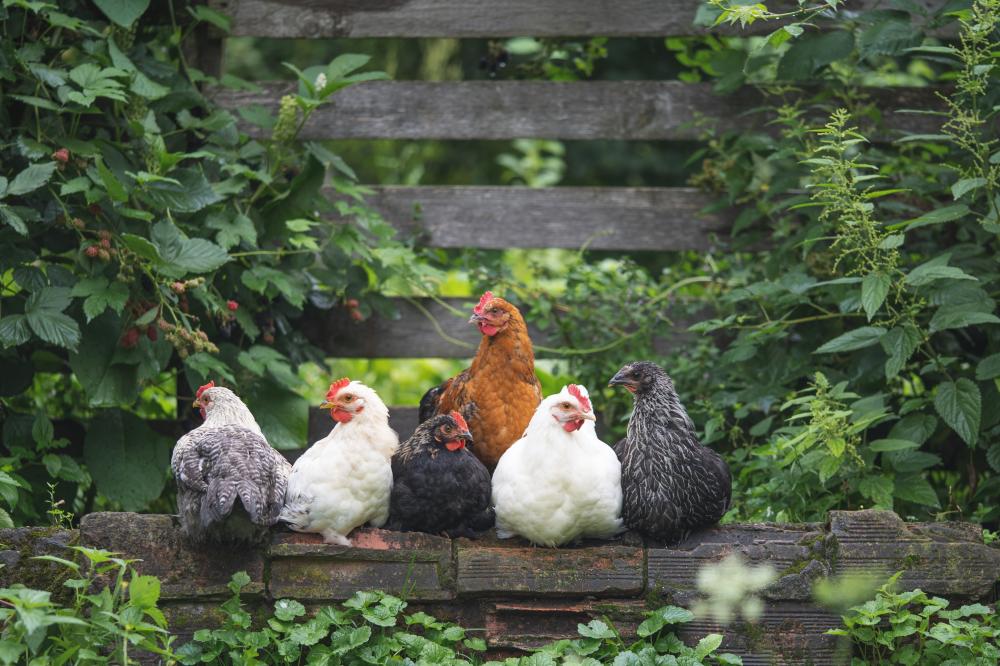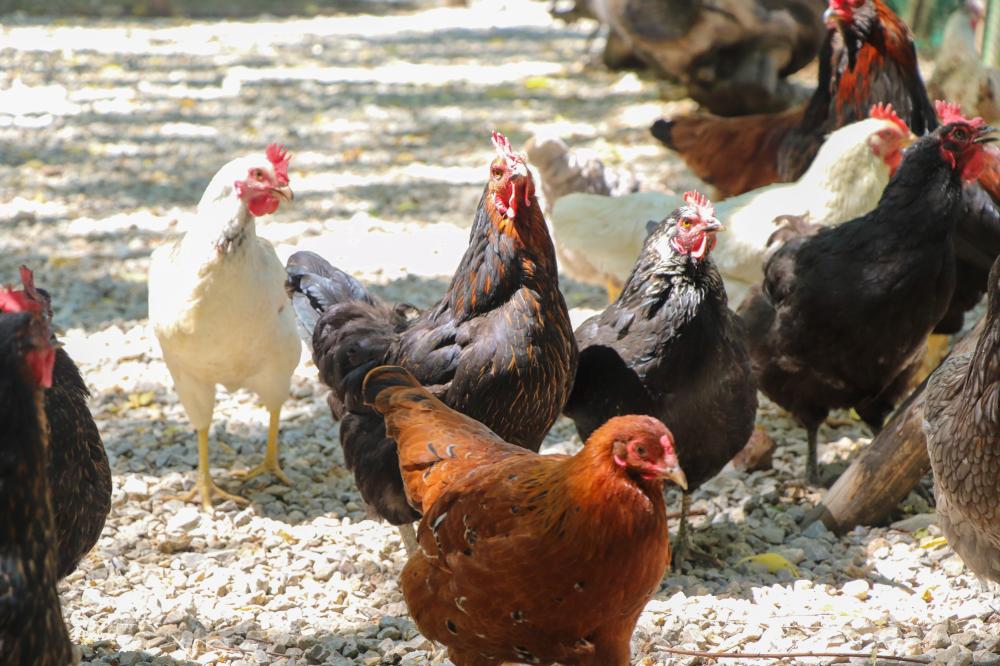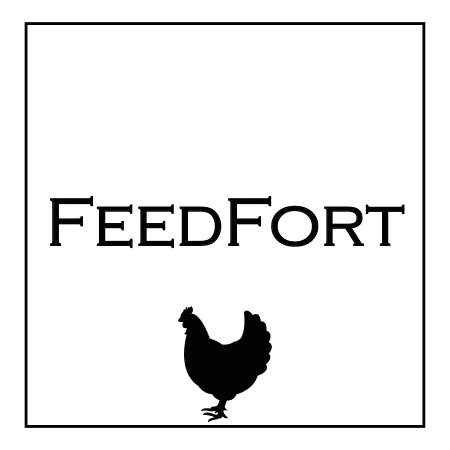Low-Maintenance Poultry Feeder

Choosing the Right Feeder
Embarking on the journey of raising chickens requires some essential considerations to ensure the health and well-being of your flock. One of the pivotal points of focus is selecting the ideal Low-Maintenance Poultry Feeder. At FeedFort, we understand the challenges poultry owners face, from predation by rodents to the constant need to refill feeders. Our solution is crafted with these challenges in mind, prioritizing ease and efficiency.
Benefits of Low-Maintenance Feeders
Opting for a Low-Maintenance Poultry Feeder isn’t just about saving time; it’s about enhancing the overall health and productivity of your flock. Our feeders ensure a continuous supply of feed without the hassle of daily maintenance. This consistency is key to eliminating hunger stress among your chickens, leading to a happier, healthier flock with improved egg production. Moreover, minimizing feed spillage and waste translates to significant cost savings over time.
The Technology Behind FeedFort
At the heart of FeedFort’s design is our patent-pending photocell technology. This innovative system ensures the feeder opens at dawn and securely closes at dusk, aligning with your chickens’ natural feeding rhythms. Made of durable 5052 Aluminum, our feeders are not only robust but also engineered to deny rodents and other pests access to your valuable feed. This proactive approach to pest management helps in reducing the risk of disease and spoilage, safeguarding both your investment and the health of your chickens.
Photocell Technology Explained
The utilization of photocell technology is a game-changer in poultry feed systems. By detecting light levels, the feeder automatically adjusts its opening and closing, eliminating the need for manual intervention. This ensures your chickens have access to feed at the optimal times of day, promoting consistent eating habits and reducing stress within the flock.
Installation and Maintenance
Setting up your FeedFort feeder is a straightforward process designed to integrate seamlessly into any coop setup. Our focus on design simplicity means you can have your feeder up and running with minimal effort, ensuring your chickens can enjoy their new feeding system as quickly as possible.
Maintenance is equally hassle-free. The design of the feeder facilitates easy cleaning and refill, making it a practical choice for both seasoned poultry enthusiasts and newcomers to the hobby. With durability at its core, the FeedFort feeder is a long-term investment into the health and efficiency of your poultry care regimen.
Ecological Impact
One often overlooked aspect of poultry feeders is their environmental impact. Traditional feeding methods can lead to significant waste and attract a range of pests, from rodents to wild birds. By keeping feed secure and minimizing spillage, FeedFort not only protects your feed but also contributes to a healthier local ecosystem. This reflects our commitment to sustainability and responsible poultry management.
Reducing feed waste not only has positive implications for your budget but also for the environment. By conserving resources and preventing unnecessary spillage, we can collectively make a meaningful difference in the ecological footprint of poultry raising practices.
Cost-Effectiveness
Investing in a Low-Maintenance Poultry Feeder from FeedFort is a decision that pays dividends over time. The initial setup cost is quickly offset by the savings on feed and the reduction of waste. Additionally, by preventing pest access to feed, you reduce the risk of disease, further protecting your flock’s health and productivity.
Our feeder’s durable construction means it will serve your coop for years to come, making it an economical choice in the long run. With the added benefit of improved egg production and healthier chickens, the return on investment is clear.
Personal Experiences
As the creators of FeedFort, we’re not just innovators; we’re chicken enthusiasts ourselves. We’ve experienced firsthand the challenges of keeping poultry and the constant battle against pests and waste. Our journey to develop the FeedFort feeder was fueled by our personal struggles and the desire to find a better, more efficient way to feed our flocks.
Seeing the positive impact on our own chickens solidified our belief in the product. Not only did we notice a marked improvement in the health and happiness of our chickens, but the peace of mind that comes from knowing our feed was secure and waste minimized was transformational.
Choosing FeedFort
When it comes to selecting a Low-Maintenance Poultry Feeder, the choice is clear. FeedFort offers a combination of durability, efficiency, and innovation that stands unmatched. Our commitment to quality and the well-being of your flock is evident in every feeder we produce. Embrace the hassle-free feeding routine with FeedFort and witness the transformation in your poultry care regimen.
By choosing FeedFort, you’re not just purchasing a feeder; you’re investing in a solution designed to enhance the productivity and health of your chickens. Join the growing number of satisfied poultry owners who have made the switch to FeedFort, and experience the difference for yourself.

How long does a 5 gallon bucket of water last for chickens?
It might surprise some, but a 5 gallon bucket of water can last roughly around 4 to 5 days for a small flock of about 5 to 6 chickens, assuming moderate temperatures. However, this can vary greatly with the weather, with chickens drinking more in hot weather. Remember, it’s paramount to check water daily, ensuring cleanliness and availability. A pro tip from our experience at FeedFort: in hot climates, adding ice to the water can help keep it cool, encouraging your chickens to drink more and stay hydrated. Have you considered how the season affects your flock’s hydration needs?
How do I keep my chicken water feeder clean?
Keeping your chicken water feeder clean is simpler than one might think, and it’s crucial for preventing disease. Firstly, it’s essential to choose a design that’s easy to clean and refill, much like our FeedFort feeders are for feed. For cleaning, a weekly scrub with a brush and a mixture of vinegar and water does wonders for removing algae and disinfecting. It’s also wise to position the waterer in a place where it’s less likely to get dirty fast. Adding apple cider vinegar to the water on occasion can help prevent algae growth and promote chicken health. Do you regularly check your waterer’s location for optimal cleanliness?
What type of feeder is best for chickens?
The best type of feeder for chickens is one that reduces waste, keeps feed dry, and prevents access by pests. Our FeedFort feeder, utilizing photocell technology to open and close with daylight, exemplifies these qualities. Automatic feeders like ours not only save on feed costs but also ensure that chickens have access to fresh feed without contamination. The durability of materials, such as the 5052 Aluminum we use, also plays a critical role in longevity and rodent resistance. Have you assessed your current feeder’s effectiveness in these areas?
How big of a feeder do I need for 20 chickens?
For a flock of 20 chickens, a feeder that holds around 40-50 pounds of feed would be most efficient, ensuring that all chickens have access without overcrowding. Automatic feeders, like the ones we develop at FeedFort, are designed to minimize waste and allow for easy access by the chickens, meaning the feed lasts longer and is used more efficiently. It’s also important to consider the physical space the feeder occupies, ensuring there’s enough room for all chickens to feed comfortably. Have you considered upgrading to a feeder that better suits the size of your flock?
What are the ecological benefits of using a Low-Maintenance Poultry Feeder?
Using a Low-Maintenance Poultry Feeder like ours at FeedFort has significant ecological benefits. By reducing feed waste and preventing spillage, we not only save on the cost of feed but also contribute to a reduction in the attraction of pests, which can have a broader impact on the local ecosystem. Additionally, our feeders are designed for longevity, meaning less frequent replacements and a lower carbon footprint over time. It’s a win-win for both poultry owners and the environment. Have you thought about the broader environmental impact of your poultry feeding methods?
Resources
- University of Minnesota Extension – Poultry: Visit this site for expert information on all aspects of poultry care, including feeding, housing, and health.
- FDA – Getting to Know Your Feed Label: Understand the importance of feed labels and how to choose the right feed for your chickens.
- USDA National Agricultural Library – Small Poultry: Explore resources on small poultry production, including feeding strategies and equipment.
- Iowa State University Extension and Outreach – Poultry: Access research-based information on poultry nutrition, management, and health.
- American Veterinary Medical Association – Avian Influenza and Newcastle Disease Vaccination: Learn about vaccination recommendations for protecting your poultry from diseases.

